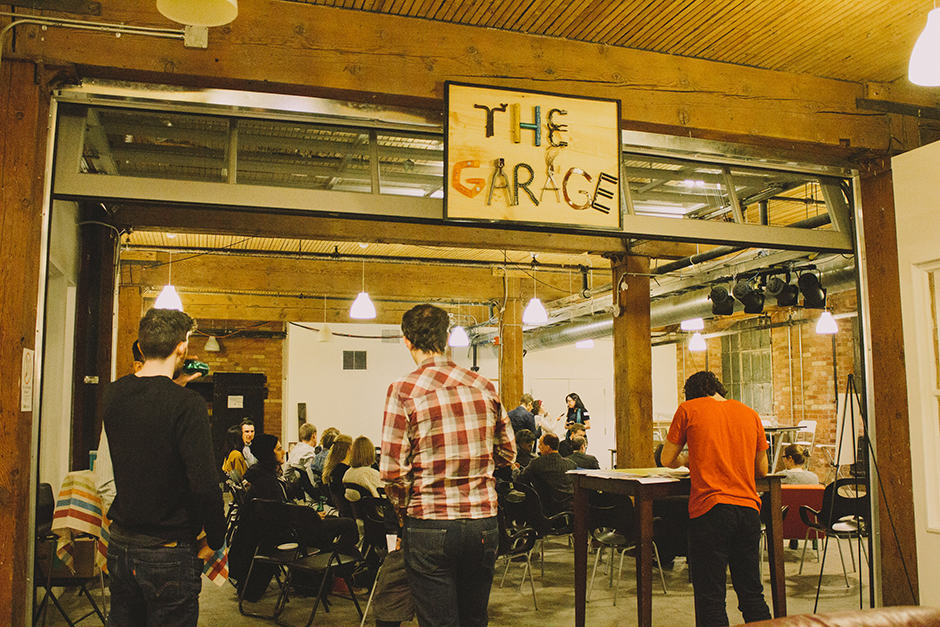The Centre for Social Innovation (CSI) space on Bathurst Street was all about bikes on March 20, when Bikechain celebrated its tenth anniversary and twenty-five-thousandth visit. The event featured a panel of guest speakers including urban planner Yvonne Bambrick and city councillors Mike Layton and Joe Cressy.
Bikechain, for those who have not accidentally stumbled upon the initiative during a search for Harvest Noon, is a non-profit organization dedicated to sustainable transportation methods, namely the bicycle. The organization is based out of the St. George campus, and provides a variety of resources and services, facilitated through volunteers, including affordable repairs, DIY resources, and education for cycle enthusiasts of all levels.
HUMBLE ORIGINS
BikeChain, which was founded in 2005, is an initiative of the then-newly established Sustainability Office; in its early days, it operated out of OISE’s underground parking garage. The ill-sheltered space was far from ideal; it was cold, damp, and windy. As Alex Gatien — a volunteer at the time — remembers, it was as basic as “two stands with a bunch of tools in two old parking spaces.”
After its first year, the operation moved to the basement of Cumberland House. Gatien, who is also a former coordinator, describes the organization’s infancy as the “lean years” when Bikechain operated for weeks without any funding. In 2007, after a failed referendum to gain a 25-cent levy the previous spring, a renewed effort gained the operation the 25 cents per student needed through SAC (UTSU). It remains an UTSU levy to this day.
In the years that followed, Bikechain’s popularity grew exponentially. In 2009, Bikechain had its five-thousandth visit, became an incorporated not-for-profit organization, and gained its own board of directors.
The growth was rapid and unprecedented. “You’re not the engineer of the train, you’re strapped to the front of it,” says Toby Bowers, coordinator from 2009 to 2012, recalling his experience.
Bikechain quickly outgrew the “really narrow, really crowded, really noisy” space that led to long line-ups and frustrated students, as Eugene Chao, current president of the board of directors, recalls. This is far from hyperbole; Chao remembers having to literally crawl underneath people in order to get to the door.
Bikechain’s current home, the North Borden Building, is a little more functional. “We have natural light now,” current coordinator Kelly Bray exclaims, describing the many improvements, including doubling the shop floors capacity from four bike stand stations to eight. Bikechain is now hoping to refocus on building community, and servicing as many students as possible.
Bikechain may be facing another move in its near future. It has been promised a place in the new Student Commons. This space, as Riley McCullough, UTSU vice-president, University Affairs, points out, will be fully accessible — which would be a first in the operation’s 10-year history.
A REWARDING EXPERIENCE
The community that sprung up around Bikechain has been life-altering for many of its volunteers and employees. The animated chatter at CSI is clearly indicative of a close community — Bowers even describes it as “familial in a way.”
For many former volunteers and employees, Bikechain was the launching of a lifelong interest, and in some cases, a career in the bike industry. Chao, who graduated as an English major and who describes himself as “very academic,” was immediately hooked by the tactile experience of working on a bike. “I found I could put my hands on something, and I could make it work, that feeling was really empowering,” he says. Chao, along with Bowers, currently works at Central Commerce High School running a bike mechanic program.
Matt Draimin, who in 2007 took his dad’s “old beater bike” to Bikechain, quickly found himself in “bike world” as a volunteer, worker, and, eventually, president of the board of directors. Draimin, who initially studied history during his undergraduate degree, has now transitioned to studying industrial design. He credits Bikechain as the inspiration for the switch, emphasizing that “bicycles are amazing from a design point of view.”
LOOKING TO THE FUTURE
The method to Bikechain’s success was most aptly expressed by Bambrick in her speech at the event: “Having a bike space for students just makes a lot of sense.” If the crowded bike racks on campus in the spring and fall months — and even winter for those daring few — are any indication, Bikechain will continue to be an important staple for the university community and asset in sustainable transportation efforts.
Though the anniversary celebration centred around the panel, the room was clearly a reunion of sorts. It only took a few questions to realize that the night was a congregation of the many members of Bikechain’s decade-long community of volunteers, employees, and supporters, gathering to reconnect and celebrate “the Chain.”



